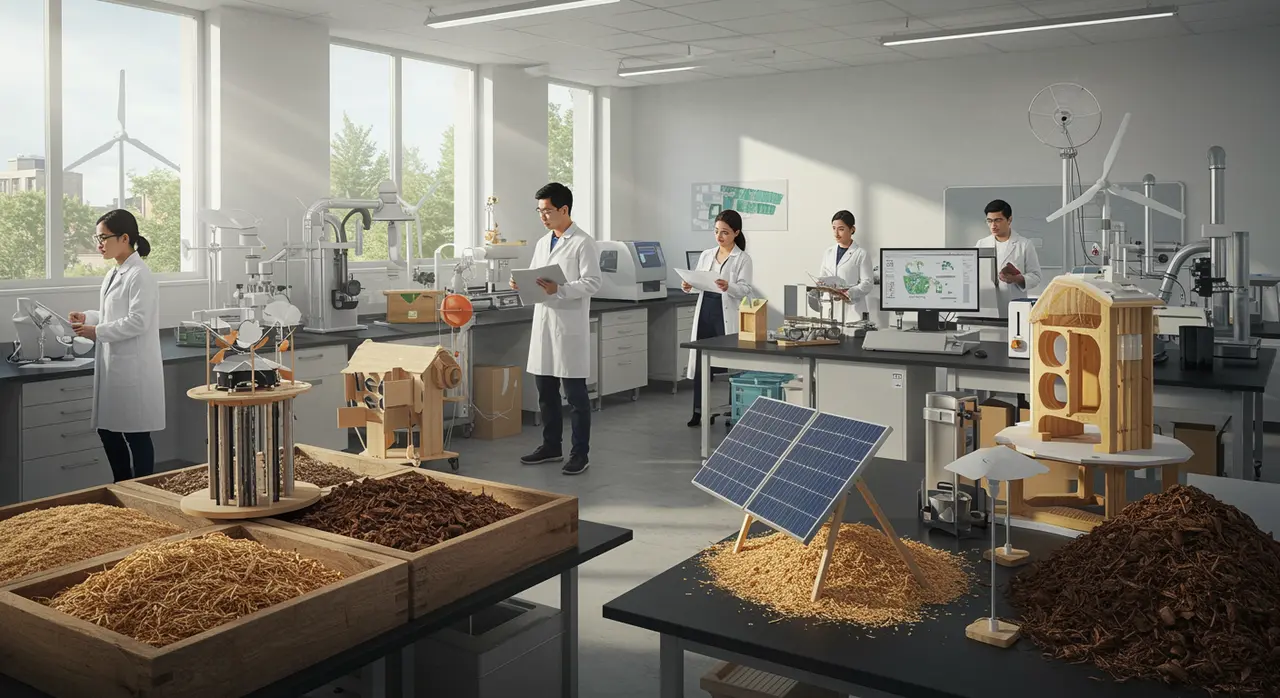University of the Basque Country Develops Pine Sawdust-Powered Hybrid Energy Storage Device
60 views
In a world where the demand for renewable energy grows ever louder, researchers from Spain's University of the Basque Country have unveiled a groundbreaking hybrid energy storage device that could redefine how we store and utilize clean power. By ingeniously blending supercapacitors, lithium-ion technology, and electrodes crafted from pine sawdust—a material as humble as it is abundant—the team has created a system that promises both affordability and resilience. This innovation, they hope, will bridge the critical gap between energy generation and consumption, a challenge that has long hindered the full potential of sustainable systems.
A New Chapter in Renewable Energy Storage
The device, a fusion of battery-like components and supercapacitors, stands as a testament to the ingenuity of modern science. Supercapacitors are renowned for their ability to deliver bursts of energy quickly, while lithium-ion batteries excel in storing energy over longer periods. By combining these technologies, the researchers have achieved a balance of high power density and durability, ensuring the device can endure countless charge-discharge cycles without significant degradation. This dual approach addresses one of the most persistent hurdles in renewable energy storage: the need for systems that can both store large amounts of energy and respond rapidly to fluctuating demands.

What makes this innovation particularly striking is the use of high-carbon pine sawdust in the electrode development. Pine sawdust, a byproduct of the timber industry, is not only plentiful but also cost-effective, offering a sustainable alternative to the expensive materials typically employed in energy storage devices. The researchers utilized manageable heat settings and economical additives to transform this humble material into a high-performance electrode, showcasing a commitment to both environmental and economic viability. This approach aligns seamlessly with the ethos of renewable energy, where the goal is to harness nature's resources without depleting them.
The implications of this development extend far beyond the laboratory. As renewable energy sources like wind and solar continue their ascent—already accounting for 29% of global electricity generation—the need for efficient storage solutions becomes increasingly urgent. Technologies such as sodium-ion batteries and Tesla's Megapacks have made strides in this area, but the hybrid device from Spain introduces a new dimension of affordability and durability. If scaled successfully, it could accelerate the adoption of renewable energy systems worldwide, enabling communities to rely less on fossil fuels and more on clean, sustainable power.
The timing of this breakthrough is particularly poignant. Climate change remains one of the most pressing issues of our era, and the transition to renewable energy is widely regarded as a cornerstone of mitigation efforts. Yet, the intermittency of sources like wind and solar—where energy production often fails to align with consumption patterns—has posed a significant challenge. The hybrid device offers a promising solution, potentially smoothing out these mismatches and paving the way for a more reliable and resilient energy grid.
Beyond its technical merits, the innovation carries a symbolic weight. The use of pine sawdust—a material that might otherwise be discarded—underscores the importance of finding value in overlooked resources. It serves as a reminder that sustainability is not merely about adopting new technologies but also about rethinking how we use the materials already at our disposal. In this sense, the device is as much a philosophical statement as it is a scientific achievement.
Looking ahead, the researchers are optimistic about the potential applications of their work. While the device is still in the development phase, its scalability could make it a game-changer for industries ranging from residential energy storage to large-scale renewable projects. The team’s vision is clear: to refine the technology further and integrate it into systems that support the global shift toward clean energy. Their efforts resonate with a broader movement in science and industry, where innovation is increasingly geared toward solving the existential challenges posed by climate change.
As the world grapples with the complexities of transitioning to sustainable energy, advancements like this hybrid storage device offer a glimmer of hope. They remind us that solutions often lie in the intersection of creativity and practicality, where the boundaries of science are pushed not only to achieve technical excellence but also to serve the greater good. In the case of this pine sawdust-powered device, the blend of ingenuity and environmental stewardship could mark a turning point in how we approach renewable energy storage—an essential step in the journey toward a cleaner, more sustainable future.









